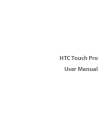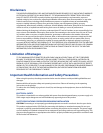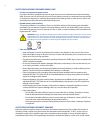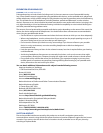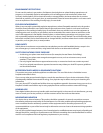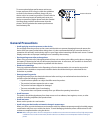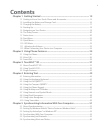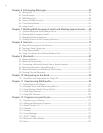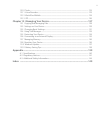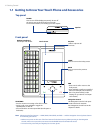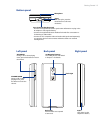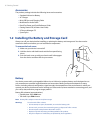5
PREVENTION OF HEARING LOSS
CAUTION: Avoid potential hearing loss
Prolonged exposure to loud sounds (including music) is the most common cause of preventable hearing
loss. Some scientific research suggests that using portable audio devices, such as portable music players and
cellular telephones, at high volume settings for long durations may lead to permanent noise-induced hearing
loss. This includes the use of headphones (including headsets, earbuds and Bluetooth® or other wireless
devices). Exposure to very loud sound has also been associated in some studies with tinnitus (a ringing in the
ear), hypersensitivity to sound and distorted hearing. Individual susceptibility to noise-induced hearing loss
and other potential hearing problems varies.
The amount of sound produced by a portable audio device varies depending on the nature of the sound, the
device, the device settings and the headphones. You should follow some commonsense recommendations
when using any portable audio device:
Set the volume in a quiet environment and select the lowest volume at which you can hear adequately.
When using headphones, turn the volume down if you cannot hear the people speaking near you or if
the person sitting next to you can hear what you are listening to.
Do not turn the volume up to block out noisy surroundings. If you choose to listen to your portable
device in a noisy environment, use noise-cancelling headphones to block out background
environmental noise.
Limit the amount of time you listen. As the volume increases, less time is required before your hearing
could be affected.
Avoid using headphones after exposure to extremely loud noises, such as rock concerts, that might
cause temporary hearing loss. Temporary hearing loss might cause unsafe volumes to sound normal.
Do not listen at any volume that causes you discomfort. If you experience ringing in your ears, hear
muffled speech or experience any temporary hearing difficulty after listening to your portable audio
device, discontinue use and consult your doctor.
You can obtain additional information on this subject from the following sources:
American Academy of Audiology
11730 Plaza American Drive, Suite 300
Reston, VA 20190
Voice:
(800) 222-2336
Email: info@audiology.org
Internet:
www.audiology.org
National Institute on Deafness and Other Communication Disorders
National Institutes of Health
31 Center Drive, MSC 2320
Bethesda, MD USA 20892-2320
Voice:
(301) 496-7243
Email: nidcdinfo@nih.gov
Internet:
http://www.nidcd.nih.gov/health/hearing
National Institute for Occupational Safety and Health
Hubert H. Humphrey Bldg.
200 Independence Ave., SW
Washington, DC 20201
Voice:
1-800-35-NIOSH (1-800-356-4674)
Internet:
http://www.cdc.gov/niosh/topics/noise/default.html
SAFETY IN AIRCRAFT
Due to the possible interference caused by this product to an aircraft’s navigation system and its
communications network, using this device’s phone function on board an airplane is against the law in most
countries. If you want to use this device when on board an aircraft, remember to turn off your phone by
switching to Airplane Mode.
•
•
•
•
•
•



